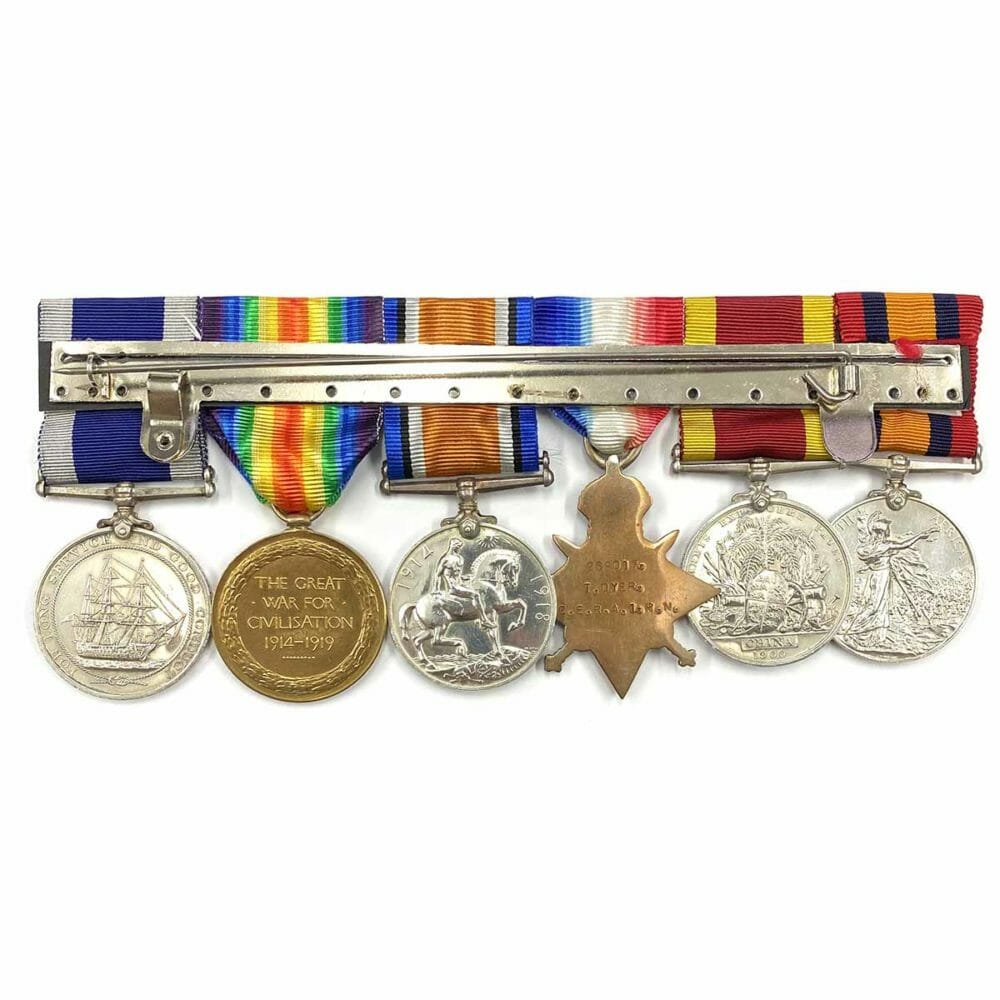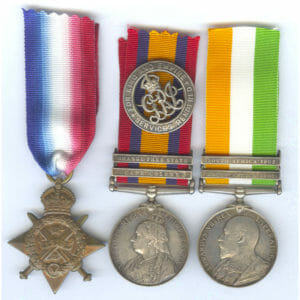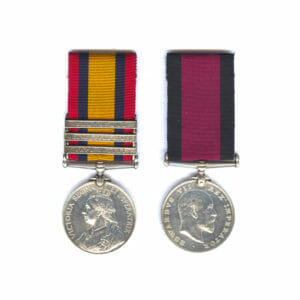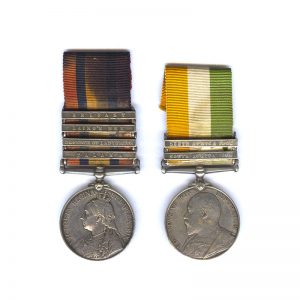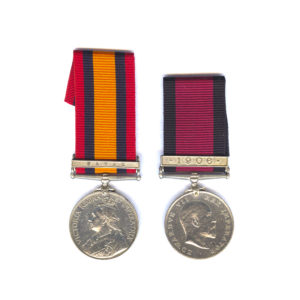Description
Queen’s South Africa Medal, China Medal 1900, 1914-15 Star Trio, Naval L.S. and G.C., Chief Engine Room Artificer Thomas Dyer, Royal Navy, Killed in Action on HMS Black Prince on 31st May 1916, Battle of Jutland.
Q.S.A. impressed: “T. Dyer. E.R.A. 4. CL., H.M.S. TERRIBLE.”
China impressed: “T. Dyer. E.R.A. 3. CL. H.M.S. TERRIBLE.”
1914-15 Star Trio impressed: “269017 T. Dyer. C.E.R.A. 1. R.N.”
Naval LSGC impressed: “269017 Thomas Dyer. C.E.R.A. 1CL. HMS Topaze.”
Thomas Dyer was born on 2nd September 1874 in Alverstoke, Hants. He was working as a Fitter and Turner when he joined the Royal Navy on 27th April 1897 at HMS Victory II.
He joined his first Ship, HMS Terrible as Engine Room Artificer 4th Class on 7th July 1898. Being promoted to E.R.A. 3rd Class on 27th April 1900.
He served onboard the ship until 24th October 1902, during which time he was on board and took part in both the Second Boer War and the Third China War, the Boxer Rebellion.
Continuing his Naval career he served on HMS Firequeen (1904-5), HMS Erebus, HMS Vulcan (1905-7), HMS Orion (1907), HMS Aboukir (1907), HMS Egmont (1907), HMS Vernon (1907-9), HMS Hindustan (1909-12), HMS Hecla (1912), HMS Topaze II (1912), HMS Minerva II (1912-13), HMS Attentive (1914), HMS Fisgard (22/03/1914-20/04/1914).
During this time he had advanced to Acting Chief Engine Room Artificer 2nd Class (HMS Drake) on 1st October 1903, Chief Engine Room Artificer 2nd Class (HMS Firequeen) on 1st October 1904.
Finally becoming Chief Engine Room Artificer 1st Class (HMS Victory II), 29th September 1909.
Before WW1 broke out he had joined the crew of HMS Black Prince on 21st April 1914, he would served with the ship until it was sunk.
During this period as one of the 4 armoured cruisers of the 1st Cruiser Squadron, Mediterranean Fleet, they participated in the pursuit of the Goeben and Breslau, when Black Prince captured German Ocean Liners Sudmark and Istria.
Then after a refit in March 1916 they took part in the Battle of Jutland on 31st May 1916.
For many years after the battle, the circumstances of the sinking of the Black Prince was somewhat of a mystery, as a member of the 1st Cruiser Squadron, the ships were sent out as part of a screening force several miles out ahead of the Grand Fleet, but Black Prince lost contact with the rest of the Squadron as it came into contact with German Forces, at about 17:42, soon afterwards, 2 more members of the 1st Cruiser Squadron, HMS Defence and HMS Warrior, were heavily engaged by German Battleships and battle cruisers, with Defence blowing up and Warrior receiving heavy damage, later causing her to sink.
The German’s made their own account as they witnessed the sinking. HMS Black Prince briefly engaged the German Battleship Rehinland at about 23:35 GMT, scoring 2 hits with 6-inch shells. They were far separated from the rest of the British fleet, Black Prince approached the German lines shortly after midnight. She turned away from the German battleships, but it was too late. Then German battleship Thuringen fixed Black Prince in her searchlights and opened fire. Up to 5 other German Ships joined the attack, including Nassau, Ostfriesland, Friedrich der Grosse starting a massive bombardment, with any return fire from Black Prince being ineffective. Most of the German ships were between 750 and 1500 yards of the Black Prince, which was considered effectively point blank range for contemporary naval.
As a result the Black Prince was a sitting duck and was hit by at least 12 heavy shells and several smaller ones, she sank within 15 minutes. There were 0 survivors, all 857 of her crew were killed in action.

